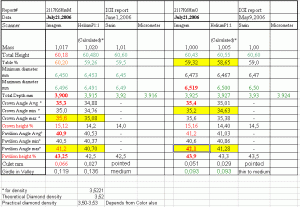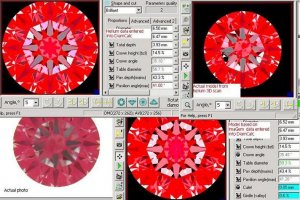- Joined
- Sep 3, 2000
- Messages
- 6,756
You may have some old data from when ImaGem opened in Surat. The new measures are quite precise and repeatable. Maybe there has been some initial problems that have been worked on. This does happen with new technology. If you think your data shows something of importance to be addressed, then please let us have a copy to examine.Date: 7/24/2006 4:11:19 PM
Author: Serg
Date: 7/24/2006 1:31:14 PM
Author: oldminer
Sergey; Just because you are annoyed does not give you license to disseminate untruths. I think you last post is out of line and out to be edited by you. Please keep to the facts. When I don''t have the facts, I find out, not exaggerate. ImaGem can re-identify.
Dave,
I am not annoyed at all. I do not see any reason to be annoyed.
I did not say what Imagem can not re-identify.
I wrote:
''Parameters Cut from Imagem has worse accuracy than Sarin.
It is bad for task auto re-indentify.''
I can published facts what Imagem has worse accuracy than Sarin. I can do it tomorrow if you want. I have more data about Imagem accuracy now and can proof my statement easy.
I hope what ''bad accuracy is bad for task auto re-indentify '' is clear for you
.
I hope at the same time, you have identified the literature your rep handed out in Mumbai that showed greater lack of precision as stones became larger and as reducing lenses were used. I gave you the name of this piece of literature in one of my previous postings and you didn''t mention anything on that subject since. Every device has some issue, some weakness, something it could do better. We each want to bring out devices that do the best job and let the market decide which ones work the best for each task.
The "worse accuracy than Sarin" subject is quite a weak one to center on. I know that ImaGem is in good shape on those measures and your data, wherever obtained, is from flawed reports proving human failings, not software or hardware failures.







300x240.png)